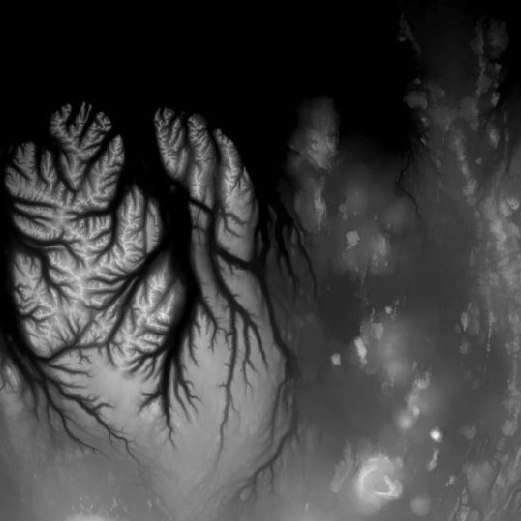DEM
Type of resources
Available actions
Topics
INSPIRE themes
Keywords
Contact for the resource
Provided by
Years
Formats
Representation types
Update frequencies
status
Scale
Resolution
-

IS: Í korstjánni er hægt að skoða hæðarlíkan af Íslandi og hlaða því niður. en: The Digital Elevation Model (DEM) Map from Náttúrufræðistofnun allows to view and download the DEM, find its derivative like slope and orientation and much more. ÍslandsDEM refers to "Digital Elevation Model (DEM) of Iceland" in English. A DEM is a digital representation of the Earth's surface topography, typically represented as a grid of elevation values. It provides information about the height or elevation of the terrain across a specific area, allowing for the creation of detailed three-dimensional representations of the landscape. DEM data is widely used in various applications, including geographic information systems (GIS), environmental modeling, land use planning, engineering design, and natural resource management. It can be used to analyze terrain characteristics, calculate slope and aspect, identify drainage patterns, model water flow, and assess landscape suitability for various purposes.
-

Náttúrufræðistofnun hafa unnið nýtt landhæðarlíkan af Íslandi. Um uppfærslu á eldra líkani er að ræða þar sem nýleg gögn af ólíkum uppruna þekja um 39.100 km2 eða um 38% landsins. Stærsta samfellda uppfærslan nær frá Suðurlandi til norðausturs, austur fyrir Egilsstaðir.Hæðarlíkanið hefur 10 x 10 m myndeiningar. Helsu nýleg gögn eru (sjá staðsetningu á meðfylgjandi smámynd hér fyrir neðan): 1) IPY-Lidargögn fyrir jökla landsins frá árunum 2007-2012, 15144 km2, LE90: 2,65 m. 2) Gögn úr 5-m-hæðarlínum, 10736 km2, LE90: 3,9 m. 3) Emisar radargögn, 4536 km2, LE90: 3,2 m. 4) Gögn úr 10-m-hæðarlínum, 2938 km2, LE90: 8,48 m, 5) SwedeSurvey photogrammetry gögn, 1433 km2, LE90: 2,60 m, 6) Gögn úr mælikvarða 1:25.000, 1152 km2, LE90: 3,8 m, 7) Bresk lidargögn (Dr. Susan Conway, Open University), 532 km2, LE90: 0,96-4,63 m. Líkaninu fylgir hæðarskygging, þ.e. upphleypt mynd af landinu en slíkar myndir eru gjarnan notaðar sem undirlag til að draga fram eða leggja áherslu á landslag. The Institute of Nature Research has made a new DTM of Iceland. The DTM is an upgrade of an earlier DTM where recent data, that vary in origin, cover 39.100 km2 or some 38% of the country. The DEM has pixel resolution of 10 x 10 m with. The main recent data are (see location on figure below): 1) IPY-lidar data for the glaciers of Iceland (surveyed in the years 2007 to 2012), 15144 km2, LE90: 2,65 m. 2) Data from 5-m-contour lines, 10736 km2, LE90: 3,9 m. 3) Emisar radar data, 4536 km2, LE90: 3,2 m. 4) Data from 10-m-contour lines, 2938 km2, LE90: 8,48 m, 5) SwedeSurvey photogrammetic data, 1433 km2, LE90: 2,60 m, 6) 1:25.000 contour data, 1152 km2, LE90: 3,8 m, 7) British lidar data (courtesy of Dr. Susan Conway, Open University), 532 km2, LE90: 0,96-4.63 m.The DTM is accompanied by a hillshade or a relief image of Iceland. Hillshade images are commonly used as a layer beneath maps or data to emphasize landscape.
-
Íslenska: Frá 2015 hefur verið opið aðgengi að hæðargögnum af Norðurheimskautinu (norður af 60°N, þar með talið af Íslandi). Gögnin hafa gengið undir nafninu ArticDEM og eru frá Polar Geospatial Center sem er staðsett í University of Minnesota (https://www.pgc.umn.edu/data/arcticdem/). Gögnin urðu til við vinnslu mikils magns af landhæðarlíkönum, flest frá 2012 en elstu gögnin eru frá 2008. Landhæðarlíkönin eru unnin úr steríópörum af gervitunglamyndum frá WorldView 1-3 og GeoEye-1. Notast var við SETSM sem er opinn hugbúnaður fyrir stafrænar myndmælingar á Bluewaters ofurtölvu University of Illinois. Hvert landhæðarlíkan hefur 2x2 m upplausn og dekkar um 18X100 km stórt svæði á jörðu. Samstarf Náttúrufræðistofnunar, Veðurstofunnar og Polar Geospatial Center leiddi til þess að eftirfarandi aðferðir voru þróaðar til þess að vinna með gífurlegt magn gagna. Aðferðirnar eru: 1- Samræma staðsetningu allra landhæðarlíkana 2-Búa til samsett landhæðarlíkan úr öllum líkönunum með því að búa til þekju sem geymir tíma gagnanna. Hver pixill í samsetta líkaninu sem er unnið úr ArcticDEM er miðgildi allra líkana sem fyrirfinnast á svæðinu. English: Since 2015, elevation data from the Arctic (north of 60°N, including Iceland) started to be openly available through the ArcticDEM project, led by the Polar Geospatial Center, University of Minnesota (https://www.pgc.umn.edu/data/arcticdem/). This data consists of a large amount of Digital Elevation Models (DEMs) repeatedly acquired (multitemporal), typically from 2012-present, and the oldest data reaching back to 2008. The Digital Elevation Models (DEM) are derived from satellite sub-meter stereo imagery, particularly from WorldView 1-3 and GeoEye-1. The processing of the DEMs was done using SETSM, an open-source digital photogrammetric software, in the Bluewaters supercomputer (University of Ilinois). Each DEM has 2x2m resolution and a footprint of ~18x100km. In a collaborative effort between the Institute of Nature Research, the Icelandic Meteorological Office and the Polar Geospatial Center, we developed methods to handle and process a large amount of data available for Iceland. The methods developed consisted of: 1-Spatial adjustment of all the available DEMs, for homogeneity and consistency in the location of each individual DEM. 2-Robust mosaicking into one single DEM of Iceland, by taking advantage of the multi-temporal coverage of DEMs. Each pixel of the mosaic corresponds to a median elevation value from the possible elevations available from the ArcticDEM. For 3D printing the elevation model see: https://leidbeiningar.lmi.is/instruction/3dprinting
 Lýsigagnagátt
Lýsigagnagátt